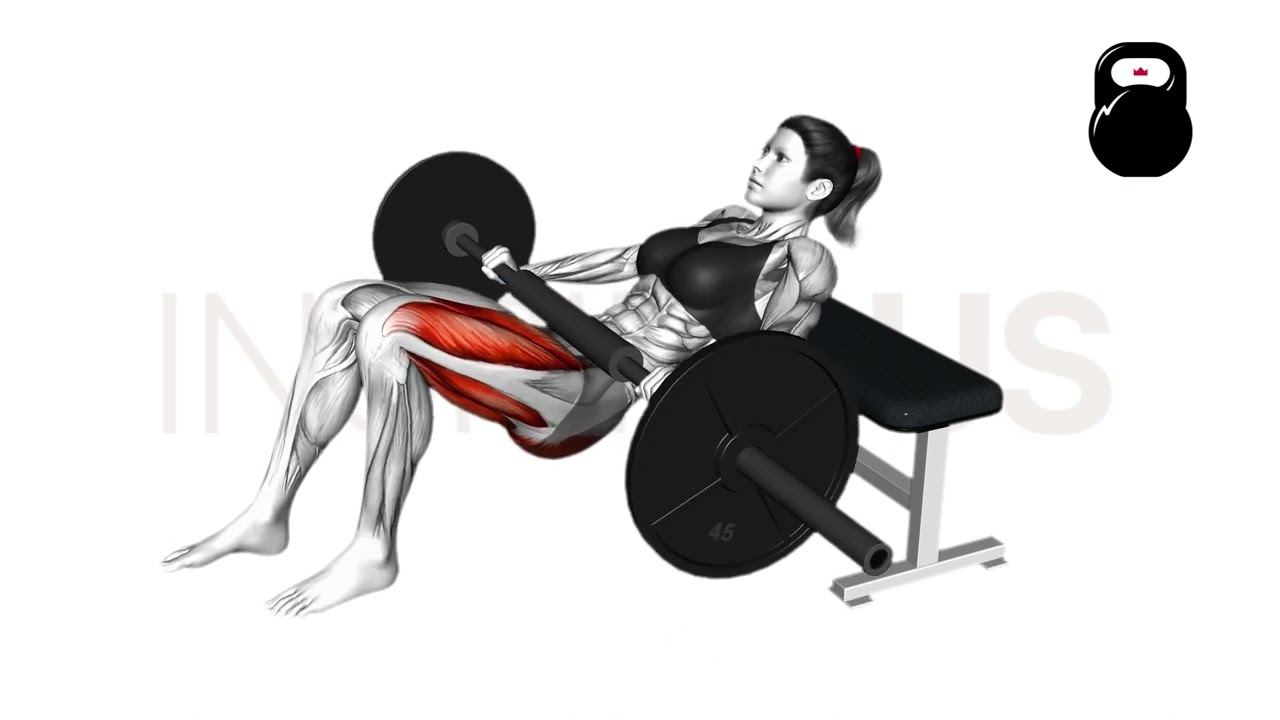B Stance Hip Thrust: Benefits, Muscles Worked, and More
Hip thrusts are performed in the B stance so as to create a more unilateral muscular recruitment, challenge the lifter’s balance and overall create a more intense exercise without necessarily increasing volume or load.
If these benefits sound like something your training program needs, follow along as we discuss how to perform the B stance hip thrust correctly.
What is a B Stance Hip Thrust?
B stance hip thrusts are a unilateral compound exercise primarily performed for targeting the gluteal muscles that make up the buttocks.
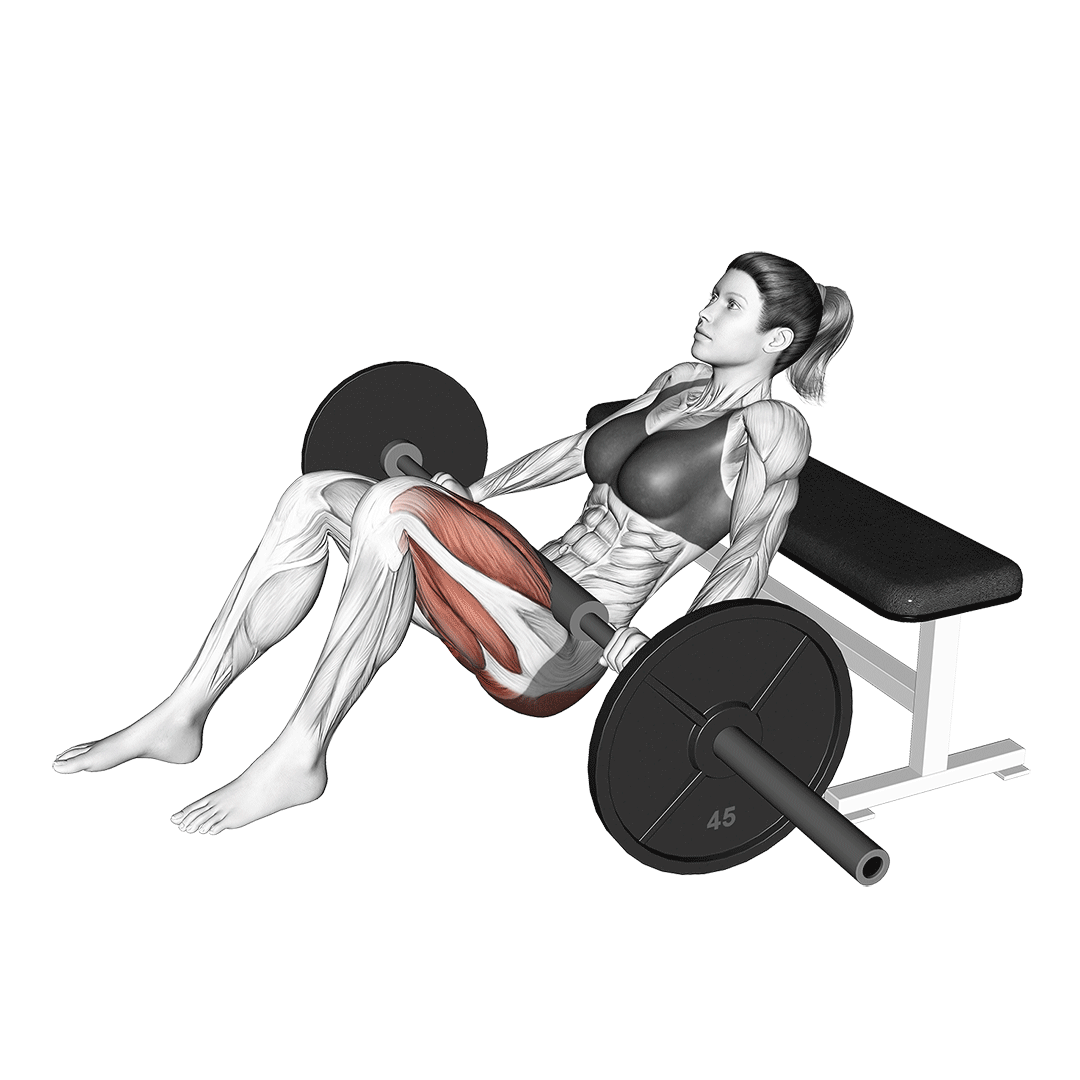
They can be performed with a variety of different forms of equipment, but for the sake of simplicity, we will focus on the barbell or bodyweight variations.
Rest assured, the general mechanics and stance remain much the same, regardless of whether a resistance band, weight plate or dumbbell is being used.
B stance hip thrusts are most optimally programmed as a secondary movement to heavier and more comprehensive lower body exercises like the Romanian deadlift or barbell squat. This is due to their somewhat lesser intensity and unilateral nature, requiring greater care be taken and limiting how far the lifter can exert themselves.
Is the B Stance Hip Thrust Right for You?
The B stance hip thrust is somewhat more complex and requires greater strength than the conventional hip thrust. As such, at least an intermediate level of experience is needed to safely perform the exercise.
Technical familiarity aside, the B stance hip thrust is also unsuitable for individuals with a history of lower back or knee injuries, as it can create compression and pressure in these areas during high intensity repetitions.
How to do a B Stance Hip Thrust
To perform a hip thrust in the B stance, the lifter will begin by first resting their upper back against a bench with both feet flat on the ground, knees drawn up and hips below both over the ground. If using weights, they may be loaded at this point.
Once in the standard hip thrust stance, the lifter will slide one foot along the ground, allowing the toes to raise off the floor until the heel is the only part still remaining atop the floor. The opposite foot should remain flat on the ground.
Now in the B stance, the lifter will contract their core, ensure their lower back is neutral and contract their gluteal muscles.
What Muscles are Worked by B Stance Hip Thrusts?
Although B stance hip thrusts are a compound movement, they may as well be considered an isolation exercise as the majority of the force involved is derived from the gluteus maximus and medius muscles.
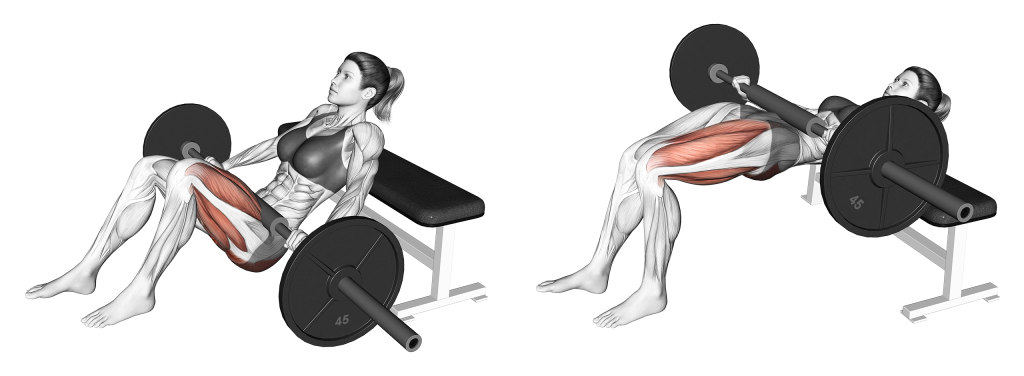
Alongside these are the hamstrings, which primarily aid in the mid-point of the repetition - meaning they are worked to a lesser degree and smaller range than the glutes.
Of course, in addition to these are the calves, lower back, abdominals and obliques. Each is considered a “stabilizer” muscle due to the isometric contraction they exhibit during the exercise.
What are the Benefits of Doing B Stance Hip Thrusts?
When performed correctly, B stance hip thrusts offer the following benefits.
Excellent for Building Glute Mass
The main advantage to B stance hip thrusts is their effectiveness at building muscle mass in the glutes - creating an overall larger and better shaped posterior chain while also strengthening any actions involving the glutes themselves.
For the best results, aim to achieve a full range of motion from top to bottom - and to program a moderate amount of volume and moderate amount of resistance.
Challenges Balance and Coordination
Because a staggered stance is used, B stance hip thrusts are more difficult to balance than conventional hip thrusts. Over repeated performance, this can lead to an easier time stabilizing other hip thrust variations and a generally better sense of balance and coordination in other physical activities.
Allows for Targeting One Section of the Lower Body at a Time
Being a unilateral exercise means that one side of the body works independently of the other. This is especially useful as the majority of glute exercises are bilateral - meaning that isolating one side can be difficult.
Unilateral training of the glutes can help resolve muscular imbalances, allow for greater intensity of conscious contraction and help the lifter more thoroughly work the entire glute muscle as a whole.
Of course, make sure to target both sides of the glutes evenly when using the B stance hip thrust for this benefit.
Greater Intensity Without Upping Weight or Volume
Lifters with limited amounts of equipment or restrictions concerning weight load can use the B stance hip thrust to up the intensity of their training without needing to actually add more weight - or even perform more repetitions per set.
This is because more of the weight itself is distributed to a single side of the body, requiring it to account for the loss of support from the opposite side.
Acts as a Progression from Bodyweight Glute Bridges and Hip Thrusts
If solely performing body weight exercise due to a lack of access to equipment, the B stance hip thrust can act as a progression exercise from both standard glute bridges and the more advanced conventional hip thrust.
Utilizing progression exercises can help progress an exerciser’s training without the use of incremental weight or steadily increasing repetition volume. More of the body’s weight shifting to just one side creates a greater intensity of contraction and overall more intense exercise.
Can be Used as Practice for One-Legged Hip Thrusts
If following the progression of exercises from glute bridge to B stance hip thrust, we can imagine that the one-legged variation of hip thrust is the next step in terms of intensity and complexity.
Unlike a B stance hip thrust, one-legged hip thrusts raise the non-working leg straight off the ground, rather than allowing the heel to rest atop the floor for stability.
This not only creates greater balance demands and requires greater familiarity with hip thrust form, but also further challenges the glutes and other stabilizer muscles.
Of course, one shouldn’t jump straight to one-legged hip thrusts if they’ve only just started with glute bridges. First attempt a B stance hip thrust in order to familiarize yourself with properly balancing on one leg prior to attempting the one-legged variant.
Common B Stance Hip Thrust Mistakes
To get the most out of the B stance hip thrust, ensure your form, range of motion, tempo and the barbell itself are all optimal. Check for the following common mistakes.
Poor Range of Motion
Like many other exercises, ensure that the B stance hip thrust is performed with a full range of motion.
Failing to complete a proper ROM with each repetition can cause certain muscles to be underutilized and potentially lead to overuse injuries of certain joints.
Each repetition of the B stance hip thrust should begin with the hips at an elevation below both the knees and the upper body - deep enough that a crease is clearly visible along the front of the pelvis but not so deep that the glutes are touching the floor.
In addition, the apex of the repetition should terminate with the hips relatively parallel to the stomach and knees.
Stance Too Wide
Because the B stance hip thrust is technically unilateral and only involves one working leg, using a too wide stance can make leveraging the non-working leg for balance more difficult.
Aim for a foot placement slightly wider than hip-width apart, as this will provide the ideal position for glute engagement and balance.
Excessively Fast Tempo
Avoid performing B stance hip thrusts too rapidly, as this can lead to damage to the coccyx and other parts of the lower back - not to mention generally poor time under tension on the glutes.
An excessively fast tempo will lead to poor development of the glutes as they are exerted for a shorter span of time. Aim to stretch out each individual phase (eccentric/concentric) for at least a single second, focusing on engaging the glutes through a full range of motion as you do so.
Supporting Leg Too Far Away
The B stance can be made more challenging the further the non-working foot is placed from the body.
However, doing so excessively can take away from properly contracting the glutes as the lifter may find it difficult to balance in such a stance.
Begin performing hip thrusts in the B stance with the supporting foot parallel to the working foot. Gradually move it further and further away as you become more familiar with the exercise as a whole.
Arching the Lower Back
To reduce strain and pressure on the lower back, avoid arching it at any point of the B stance hip thrust.
Keep the lower back flat by lightly engaging the core and ensuring that the glutes are contracted in isolation without also recruiting the lower back or spinal erector muscles.
If having difficulty performing the B stance hip thrust without arching the lower back, try setting the feet further away or raising the back higher along the bench.
Hyperextending the Hips
Similar to arching the lower back, avoid extending the hips too far at the apex of the repetition. Doing so can also strain the lower back, potentially leading to injuries and lead to other errors in form.
Aim to end the concentric phase of the movement with the hips around parallel to the stomach.
Using the Bar Raw/Without Pads
Occasionally, lifters may find that performing hip thrusts with a barbell can cause scraping and bruising along the front of their hips. This is entirely avoidable, and requires only the use of a barbell pad or yoga mat placed between the hip crease and the bar.
Alternatives to the B Stance Hip Thrust
If the B stance hip thrust doesn’t quite meet your training needs, try out the following alternatives.
Single-Leg Hip Thrusts
If the B stance hip thrust isn’t as challenging as you would like, entirely elevating the non-working leg off the ground can help take things even further.
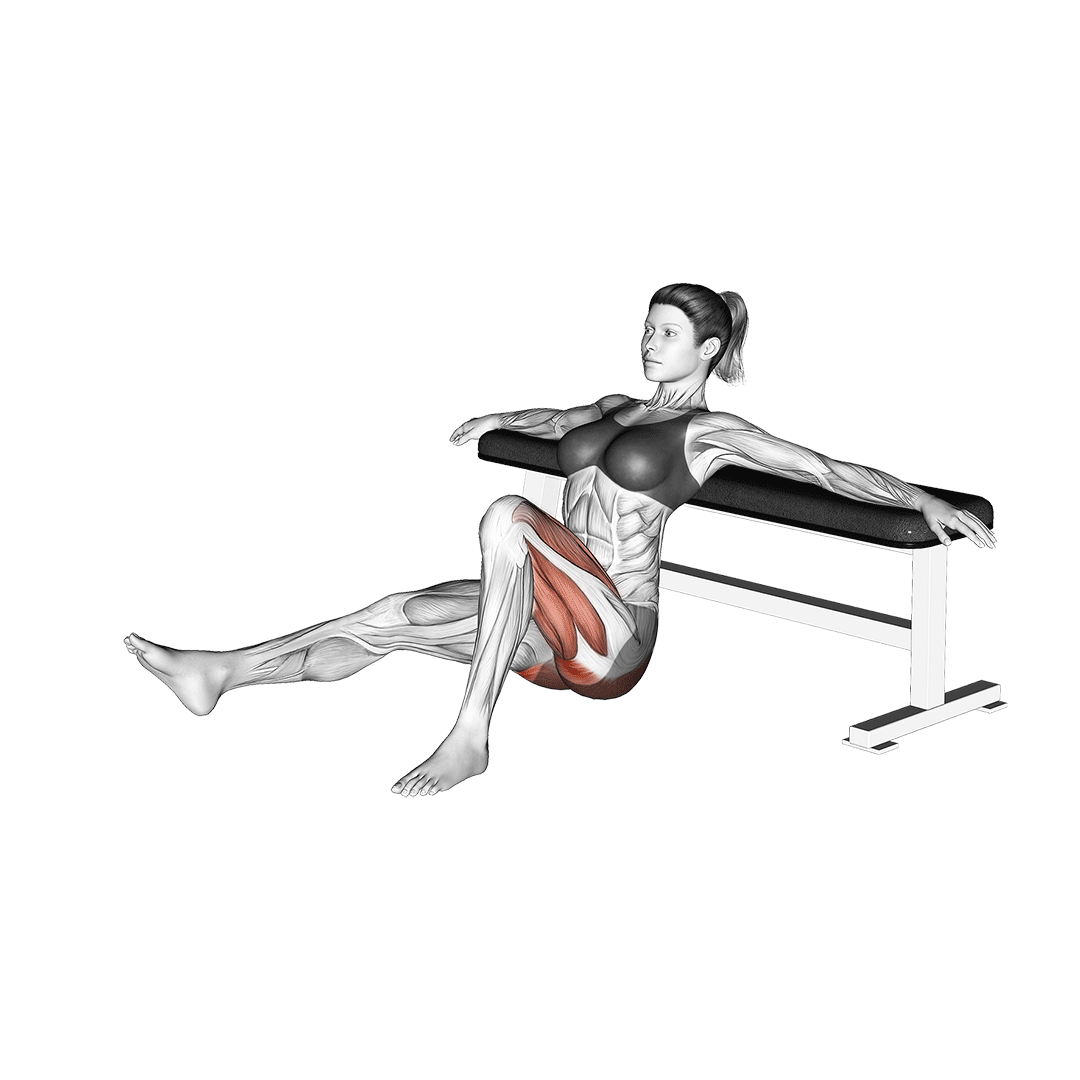
Single-leg hip thrusts are exactly as they sound; a hip thrust performed with only one leg supporting the hips. The opposite knee remains fully extended.
This particular variation of hip thrust is performed for lifters who wish to truly challenge their sense of balance and maximize the benefits of unilaterally training their gluteal muscles.
Deficit Romanian Deadlifts
The deficit Romanian deadlift is an advanced deadlift variation that maximizes glute and hamstring development through a truly large range of motion.
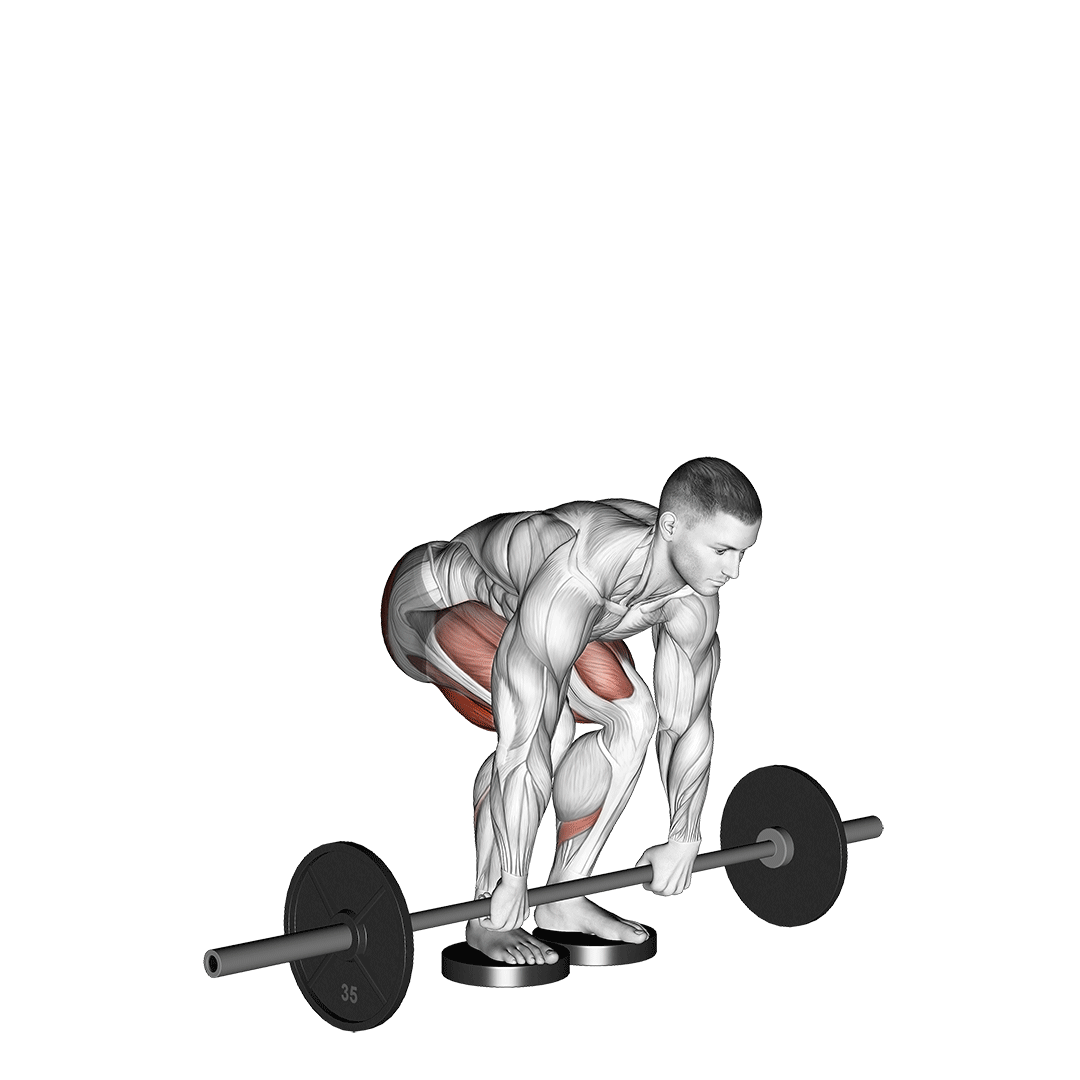
For lifters that wish to swap out their B stance hip thrusts with an exercise that tops out on intensity, few exercises will beat the deficit Romanian deadlift.
However, because Romanian deadlifts are already a technically complex movement, the addition of a deficit to further the range of motion marks this particular alternative as a highly advanced one.
Ensure you are already familiar with proper deadlift mechanics and have highly mobile hamstrings prior to substituting with this exercise.
Standing Cable Pull Throughs
The cable pull through is mechanically similar to a hip thrust, only with greater hinging of the hips and the entire movement being performed in a standing position.
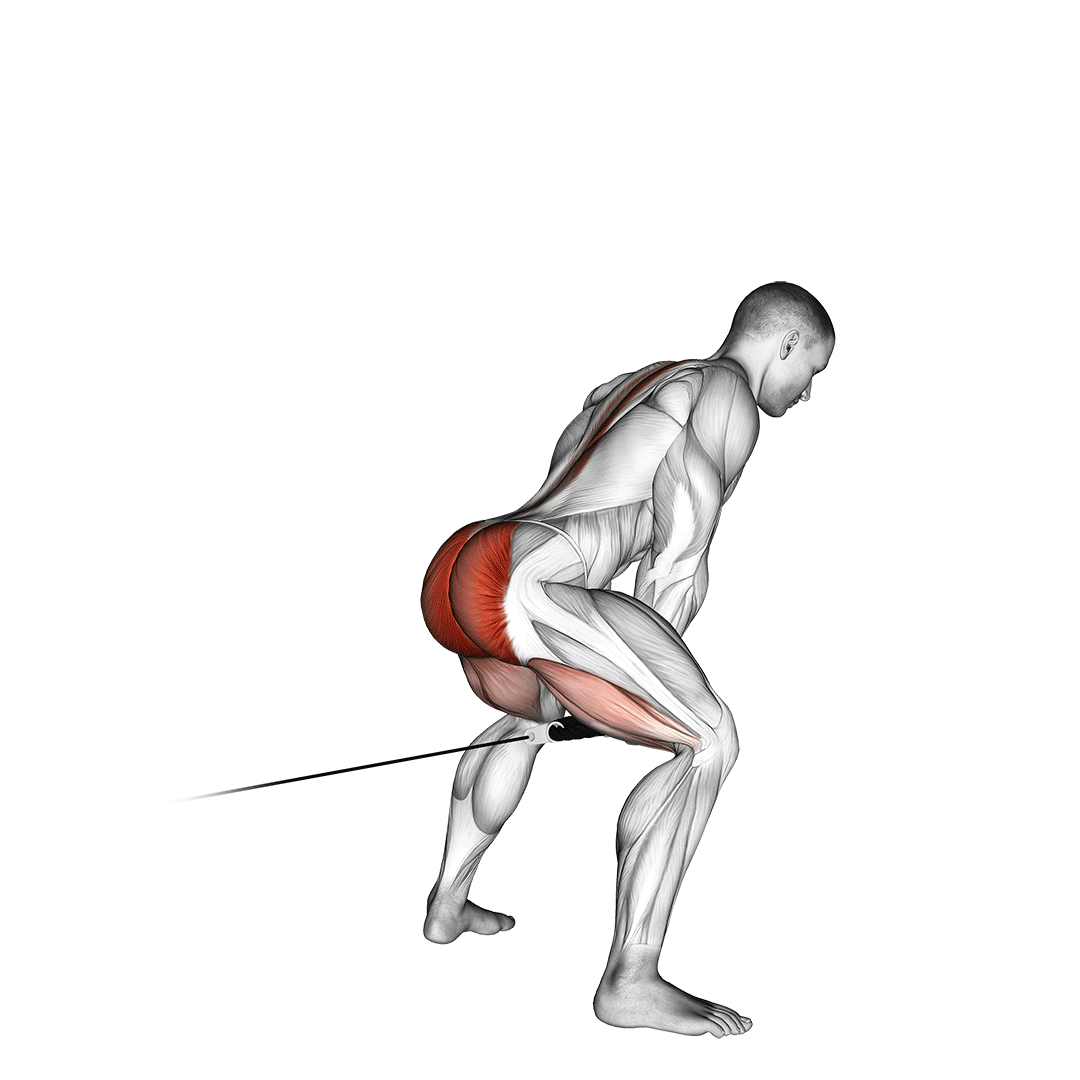
Cable pull throughs are excellent for maximizing engagement of the glutes, hamstrings and spinal erectors with a constant time under tension. In addition, they are significantly more comfortable than weighted hip thrusts, and allow for a somewhat larger range of motion if performed correctly.
Substitute out B stance hip thrusts with standing cable pull throughs if the barbell is causing discomfort, you wish for the usual benefits of machine-based exercises or want a slightly more dynamic alternative.
Frequently Asked Questions (FAQ)
What is Better, B Stance or Single Leg Hip Thrusts?
The B stance hip thrust is somewhat easier to balance but is comparatively less intense than single leg hip thrusts due to the support of the non-working leg. Whichever one is better will depend on your sense of balance and current level of training experience.
Should B Stance Hip Thrusts be Fast or Slow?
As much as possible, aim to perform B stance hip thrusts with a slow and controlled tempo. Performing them too quickly can lead to injury and generally poor development of your glute muscles. A tempo of at least two seconds with each repetition is ideal.
How Do You Do B Stance Hip Thrust With Dumbbells?
Performing B stance hip thrusts with dumbbells is much the same as doing them with a barbell - simply place them atop your hips at the start of the repetition. If uncomfortable, try placing a yoga mat lengthwise between the dumbbell and your hips.
Final Thoughts
The B stance hip thrust is an odd lift in certain aspects, but undoubtedly a useful tool when used correctly.
Unilateral glute development, balancing in an unusual position and greater intensity all call for a movement like the B stance hip thrust to be performed.
However, keep in mind that there are plenty of exercises that can achieve the same benefits as the B stance hip thrust without the same set of disadvantages. Cable donkey kickbacks, single leg back extensions and one-legged deadlifts are a few good places to start.
References
1. Liao KF, Nassis GP, Bishop C, Yang W, Bian C, Li YM. Effects of unilateral vs. bilateral resistance training interventions on measures of strength, jump, linear and change of direction speed: a systematic review and meta-analysis. Biol Sport. 2022 Sep;39(3):485-497. doi: 10.5114/biolsport.2022.107024. Epub 2021 Jul 3. PMID: 35959319; PMCID: PMC9331349.
2. Brazil A, Needham L, Palmer JL, Bezodis IN. A comprehensive biomechanical analysis of the barbell hip thrust. PLoS One. 2021 Mar 29;16(3):e0249307. doi: 10.1371/journal.pone.0249307. PMID: 33780488; PMCID: PMC8006986.

